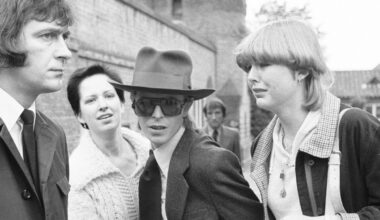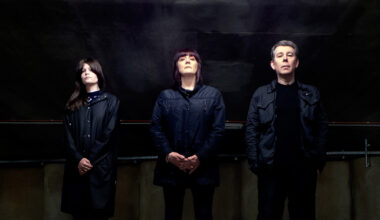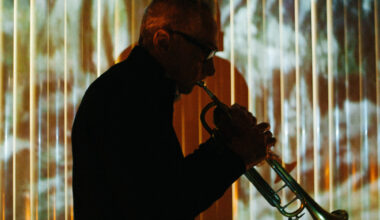EMS created nearly 30 synthesisers and other related technologies, and many more were developed that never went into production. Here are some of the highlights from a decade of innovation
VCS 1
Year: 1968 / RRP: £50 / 2019 Price: N/A
Made for a budget of £50 for the composer Don Banks, there was only ever one VCS 1, although according to the University Of Melbourne, another two offshoots were also cobbled together and sent to Australia. The original now lives in Australia, enjoying a happy retirement at the Museum Of Applied Arts And Sciences. “Thank heaven for the age of miniaturisation,” wrote Banks about his new toy, “because this was small enough for me to take to bed with headphones, and to start to explore a new world of sound.”
VCS 3
Year: 1969 / Cost: £330 / 2019 Price: £10,000
The first synth to roll out of the EMS factory retailed for £330 and gave users an electronic playground of three oscillators, as well as noise, a ring modulator, a trapezoid envelope generator, voltage-controlled reverb and the joystick and matrix board. Expect to pay all kinds of serious money if you ever find one for sale these days. And there’s a good chance it won’t work.
VCS 4
Year: 1969 / RRP: N/A / 2019 Price: N/A
The VCS 4 was never put into production, and was essentially two VCS 3s integrated into wooden cabinet, which also housed a keyboard, mixer and various signal processing knobs. Only one prototype was made, although there was another VCS 4 prototype built later on.
Synthi 100
Year: 1971 / RRP: £6,500 / 2019 Price: £50,000–£100,000
The Synthi 100 was the EMS mothership, a hulking great beast that required walls to be removed in order to fit it into studio spaces. It was a versatile if intimidating machine with more of everything, including two 60×60 pin matrixes, 12 oscillators, and 256-step digital sequencer. The primary markets for this leviathan of synthesis were universities and state-sponsored electronic music studios, usually based in national broadcast centres. The Radiophonic Workshop had one, as did universities in Australia, Canada and across Europe and the Eastern Bloc, with units going to Radio Belgrade and another in the Warsaw electric music studio.
The “Other VCS 4”
Year: 1971 / RRP: N/A / 2019 Price: N/A
This is the prototype owned by Coldcut, although it looks like it’s been put into a new wooden case. It was never produced, but a concept built by David Cockerell, revealing the kind of R&D work that was going on behind the scenes at EMS, but never saw the light of day.

Synthi A
Year: 1971 / RRP: £198 / 2019 Price: £11,000
The Synthi A was another popular design from EMS. It was the bones of a VCS 3, its interface simplified and reduced to a single panel and placed in suitcase. It was marketed as both an educational machine, ideal for the classroom, but also as a robust touring synth. Truly portable synthesis had arrived. You can hear the precise tones of Tristram Cary in the manual: “In order to use the Synthi intelligently, it is necessary to understand what the devices do, and how several devices may be connected to work in combination”. It also explained the Synthi’s ability to alter sounds input from other sources like tape recorders and amplifiers as “treatments”. Eno certainly read his Cary-penned manuals very carefully.
Synthi AKS
Year: 1972 / RRP: £420 / 2019 Price: £12,000
The AKS was another example of the forward-thinking genius of EMS. Here was a Synthi A, already a beautifully streamlined rework of the VCS 3, now incorporating a keyboard and a sequencer. It was an unbelievably elegant concept for 1972. Of course, like all synths of the era, it was a little crankier in real life, but conceptually it was way ahead of the game.
Synthi Hi-Fli (formerly Sound Freak)
Year: 1973 / RRP: £308 / 2019 Price: £5,000
EMS synths were excellent sound processors, mangling otherwise perfectly ordinary sources into exciting new timbres and colours. The Synthi Hi-Fli was aimed at guitarists, promising them far-out multi-effects, another idea that would later be adopted widely. The Hi-Fli was a curvy white plastic device for futuristic guitar noise with two pedals, octaver, fuzz, phasing, a ring modulator and various filter treatments and control modulations. David Gilmour had one, and Tony TS McPhee of The Groundhogs was an enthusiastic user.

Synthi E
Year: 1975 / RRP: £200 / 2019 Price: £4,000
The Synthi E, with its eye-catching yellow face panel, was designed specifically to appeal to the schools market. The inclusion of EMS in the Inner London Education Authority’s catalogue of approved equipment for schools to order opened up a lucrative market. The Synthi E further simplified the basic build of the Synthi A, and labelled its controls in large easy to read lettering. Again, the whole thing was housed in the ubiquitous EMS suitcase, an included an internal speaker. They even marketed this synth with a Beano-esque cartoon strip in which tortured music teachers avert their pupils’ ire at having to learn about Haydn et al by introducing a Synthi E into the classroom. How many seeds of the electronic music revolution were planted as a result of getting hands-on with a Synthi E in London schoolrooms?
Vocoder 2000
Year: 1977 / RRP: £813 / 2019 Price: £7,000
After Kraftwerk’s ‘Autobahn’ made impressive use of a vocoder in 1974, who didn’t want one? The EMS Vocoder 2000 was a majestic piece of kit. Developed from their earlier Vocoder 5000 which hit the shelves in 1975, the Vocoder 2000 is perhaps best described by its own marketing blurb: “Its main purpose is to impose the articulation of a voice onto another sound, thereby making it speak or sing. Such sounds (excitations) can be derived from any audio source. For instance: MUSICAL SOUNDS from an organ, guitar or symphony orchestra; UNMUSICAL SOUNDS such as the roar of an aeroplane, the snarl of a lion, the clatter of a typewriter and SYNTHETIC SOUNDS such as a synthesiser or the Vocoder’s own voltage-controlled oscillator or noise generator”. Sold.

PolySynthi
Year: 1978 / RRP: £700 / 2019 Price: £9,000
This attempt at polyphony was a disaster for EMS. It was clear that the future of synthesisers was to be polyphonic, and Roland and Sequential Circuits were first out of the blocks. EMS were playing catch up with this clunky but charmingly weird poly synth. It had a very odd rocking keyboard mechanism providing a novel kind of after touch effect. They made 50 of these heavyweight, brightly coloured synths before the company went bust. The arrangement of the front panels now looks like a masterclass in promoting understanding of sound design via synthesis. The interface design didn’t catch on, but the recent Moog Matriarch looks like it might well have taken some inspiration from it.






